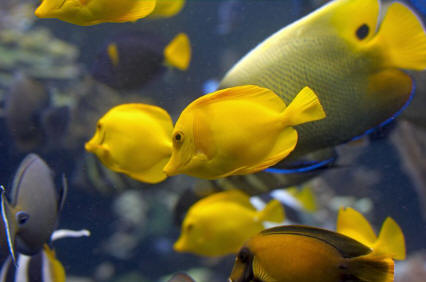Blue Tang

|
Scientific Name: Paracanthurus hepatus Price: Upon Request Origin: Indo-Pacific Family: Acanthuridae NOT AVAILABLE NOW |
|
Other Names: Palette Surgeonfish, Hepatus Tang, Regal Tang, Pacific Blue Tang, Hippo Tang, Blue Hippo Tang , Flag-Tail Surgeonfish, |
|
Technical Info
Temperature: 22 - 26 ℃
pH: 8.1 - 8.4
GH: 8 - 12
SG: 1.020 - 1.025
Max size: 26 cm
Min Tank size: 280 Ltr
Position in Aqua: Top swimmer
Description
The Blue Tang boasts a vibrant electric blue body dressed with bold black markings. In fact, the black that begins at the eyes, traces the dorsal line down to the tail, and circles back above the pectoral fin to create a unique shape reminiscent of a painter's palette. Blue Tang is equal parts beauty and peacefulness that suits almost any large community marine aquarium.
Food
Primarily an herbivore and feeds on zooplankton in the wild. Try to give them a variety of marine foods but predominantly marine algae. Having plenty of live rock for them to graze on goes a long way. They should accept vitamin enriched flake foods, frozen and definitely live foods.
Breeding
Very difficult to breed in captivity.
Compatible with
They can be aggressive with other tangs (surgeonfish), especially another Pacific Blue. Use caution when selecting tank mates for your Blue Tang. Avoid keeping them with other tangs. . As a juvenile, this fish will prefer to swim in shoals, but, as it matures, the blue tang will begin to quarrel with other fish of the same species. Unless the aquarium is very large, the blue tang should be the only fish of its genus in the tank. If multiple blue tangs are to be housed together, introduce them all at the same time.
Note
Be careful handling this tang with a net because they can get caught easily in the net. If this happens, gently and slowly move the net back and forth in the tank water. Eventually they should relax their fins and come out of the net.

